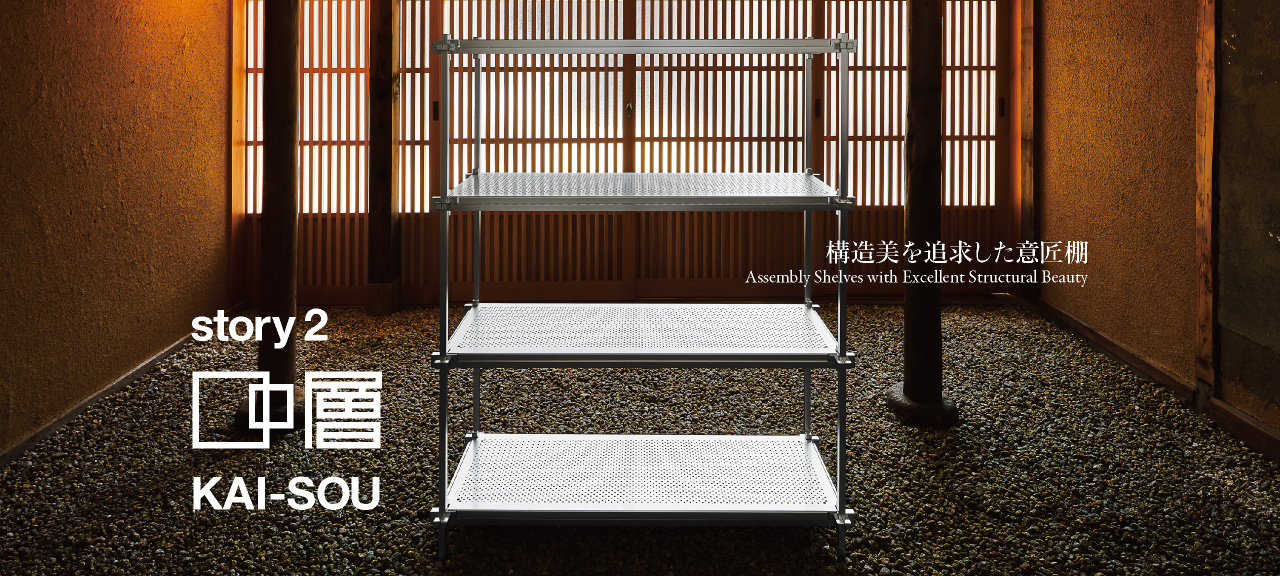

棚には日本文化の精髄が込められている。日本で装飾的な棚が使われ出したのは奈良〜平安時代のこと。中世や近世になると、棚が室内装飾の重要な役目を果たすようになり、とくに茶の湯の広がりにともなって茶道具の「置き棚」として工夫が凝らされるようになった。よく知られている修学院離宮の「霞棚」や桂離宮の「桂棚」などは、書院造建築とともに発展した「違棚」の代表例である。
これらの棚は、季節や趣向にそった花器や陶器やガラスや竹細工などと調和し、空間に色気をもたらし、場面を変える力をもっていた。一方、現代における棚は、生活環境になじむ機能的なものがふえ、その場の空気感を一気につくるような棚が少なくなってきた。 そこでKAIは、今の素材と技術をつかった新たな棚づくりに挑戦するため、匠の技が結集した日本建築の視点を持ち込んだ。
無駄を極限までなくした組み方で、主役となる「モノ」がより際立つような棚。アートやオブジェのように何層に重ねても美しさをそこなわない棚。そのような試行錯誤をへて生まれたのが「回層」である。鉱物がドンとおかれた回層や、宿のロビーでモニュメントになった回層こそ、かつての棚への憧れをカタチにする試みの一つ。
Shelves are imbued with the essence of Japanese culture. Ornamental shelves were first used in Japan during the Nara ~ Heian periods. In the middles ages and more recent times, shelves came to play an important role in interior decoration; in particular, as the tea ceremony became more widespread, ingenuity came to be exercised in making “Okidana” portable shelves for storing Tea-ware. The celebrated “Kasumidana” shelves in Shugakuin Imperial Villa and “Katsuradana” shelves in Katsura Imperial Villa are among the typical examples of “Chigai-dana” that developed hand in hand with the “Shoin-zukuri” style of traditional Japanese residential architecture.
Such shelves had the ability to harmonize with flower vases, ceramics, glassworks, bamboo craftworks and more according to the season and preference, imparting charm to spaces and altering the scenarios. Moving into the modern age, functional shelves that fit into the living environment have become more prominent, while shelves with the ability to quickly create the ambience of a place have become less prominent. In an attempt to challenge new shelf-making that utilizes modern materials and technologies, KAI has brought forth the perspective of Japanese architecture, which brings together the skills of artisans.
Based on a method of assembly that minimizes superfluity, these shelves highlight the “objects”, which are the main focus. As with art and aesthetic objects, these shelves do not impede beauty, even when stacked in multiple levels. As a result of various such trial and error, we finally arrived at KAI-SOU. The KAI-SOU shelves with heavy minerals, and those that are placed in hotel lobbies like monuments, are the ultimate attempts to give shape to bygone aspirations for shelves.

1つめの特徴は、細くて華奢な無駄のない姿。素材には、硬くて、軽くて、強度があるアルミを選んだ。アルミを用いることで、各パーツを15mm角という細さで統一することができた。木材でつくるよりも仕上がりの印象がぐっと軽くなった。
2つめの特徴は、誰でも組み立てることができ、いつでもバラすことができること。日本建築で部材を組むときに使う「仕口」の仕組みをアルミに適用し、いっさい釘を使わない組み立て方にこだわった。
そして3つ目の特徴は、一つ一つのパーツが端正で美しいこと。それぞれの部材がどう機能するかを考え抜くことで、扱いやすくて無駄のない優れた形状にたどりついた。結果的に360度どこからみても正面性を感じる棚の意匠になった。
The first feature of KAI-SOU shelves is the fine, delicate appearance with minimal superfluity. As the material, aluminum has been chosen for its hardness, lightness and strength. By using aluminum, it is possible to unify each part to thinness of 15 millimeters square, giving a finish with a much lighter impression than is possible when using wood.
The second feature is that anybody can assemble and dismantle the shelves whenever they want. By applying the Japanese architecture joinery of “Shiguchi” to aluminum, we have strived to achieve a method of assembly that requires no screws, bolts or nails.
The third feature is that each part is neat and aesthetic. By thoroughly considering how each part functions, we have arrived at outstanding forms that are easy to handle and entail no superfluity.
As a result of incorporating these features, we have arrived at shelf designs that have a frontal feel when viewed from any angle in the 360-degree circle.
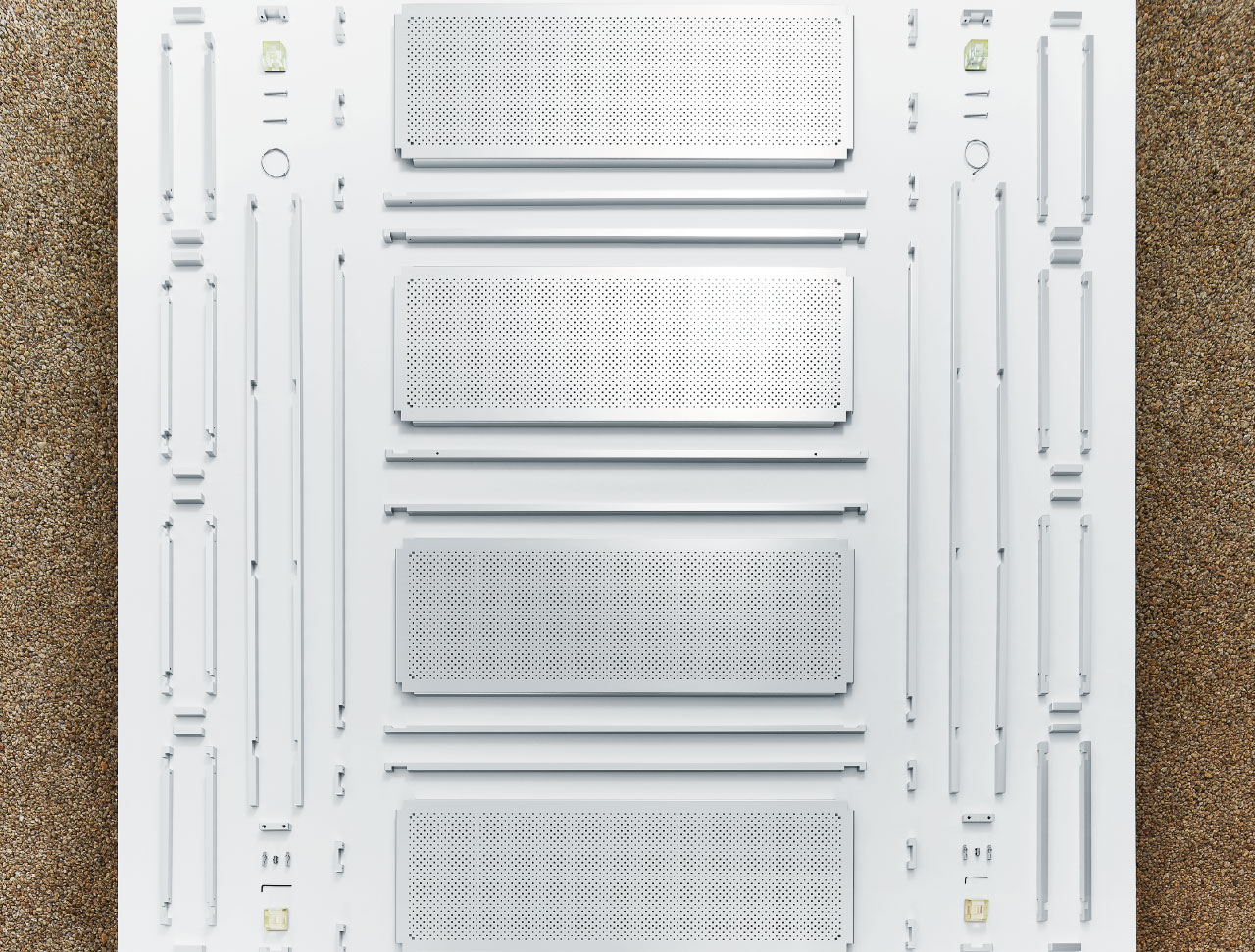
回層をつくりあげるプロセスから立体パズルのような遊具が生まれた。じっさいには、パーツとパーツをつなぐ仕口の部分になるのだが、取り出してみると6つのパーツを組み合わせて遊ぶオモチャのようなものになった。怪我をしないギリギリの研ぎ方で全体を整え、表面はヘアライン加工で仕上げた。また、光を反射するアルミの特性上、カラフルな光を当てると宝石のように輝き出す。
西洋が煉瓦を積み上げる建築の発想からブロックのようなオモチャを生み出したように、このパズルキューブ、すなわち日本建築の骨格である柱と梁が組み合わさる「仕口継手の考え方」から日本発祥のオモチャをつくりたい。
Out of the process of creating KAI-SOU, a play equipment like three-dimensional puzzles was created. Actually, these are Shiguchi pieces used for joining parts, however, by removing them, we found that they could become toys played by fitting together six parts. We shaped the overall form by polishing as far as possible without causing an injury risk, and we finished the surfaces with hairline processing. Moreover, due to the light-reflective characteristics of the aluminum, the pieces glisten like precious stones when light of different shades shine on them.
In the same way that the Western approach of stacking bricks has led to the development of building block toys, we want to make original Japanese toys based on the “concept of Tsugite-Shiguchi joinery” (beam-pillar joint), which is a forte of Japanese architecture.
Speaker: Shiro Miura Interviewer: Kanako Izumi
語り手 : 三浦史朗 書き手 : 和泉佳奈子

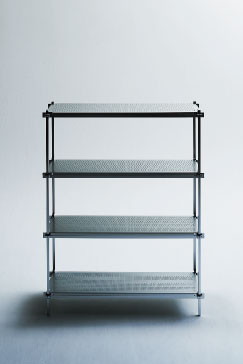

回層3段│KAI-SOU 3-level
| サイズ scale | h1225×w960×d360mm |
|---|---|
| 仕様 specification | アルミ無垢材 Aluminum and solid wood |
| 金額 price | ¥600,000(税抜 / exclusive of tax) |
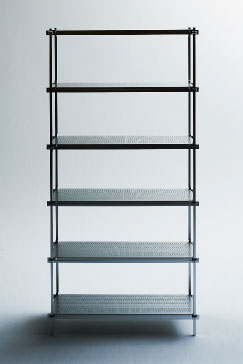
回層5段│KAI-SOU 5-level
| サイズ scale | h1945×w960×d360mm |
|---|---|
| 仕様 specification | アルミ無垢材 Aluminum and solid wood |
| 金額 price | ¥800,000(税抜/exclusive of tax) |
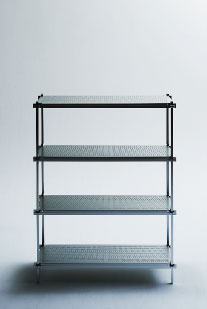
| date | 2019.8.1[thu.]–9.7[sat.] 11:00-18:00 |
|---|---|
| place | 東山 KAI Higashiyama KAI |
オープン日 : 8/1〜8/17、23、24、30、31、9/6、7
オープン日以外は予約制
火曜定休、8/14、15臨時休
Open days: August 1~August 17, 23, 24, 30, 31, September 6, 7
Reservation needed on non-open days
Tuesday regular holiday, August 14, 15 special holidays
